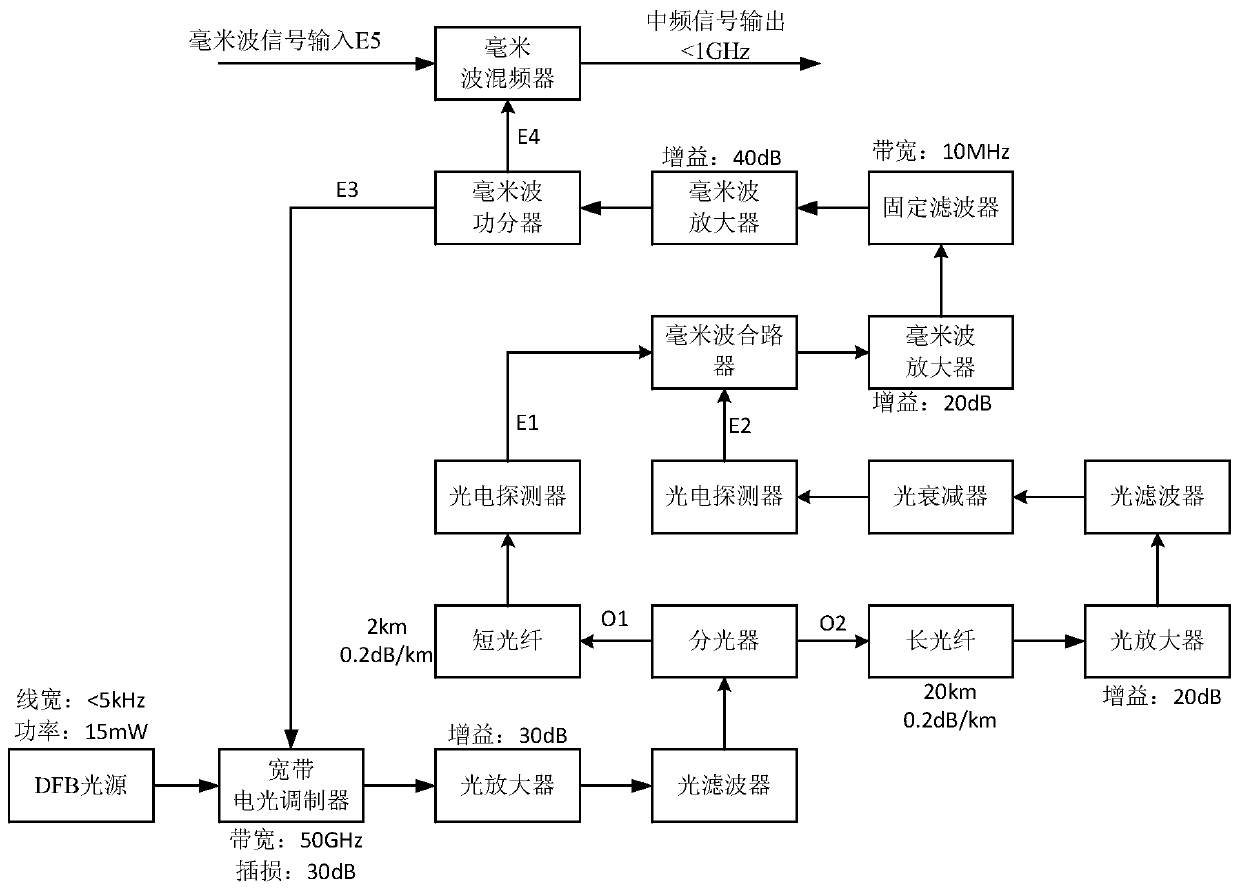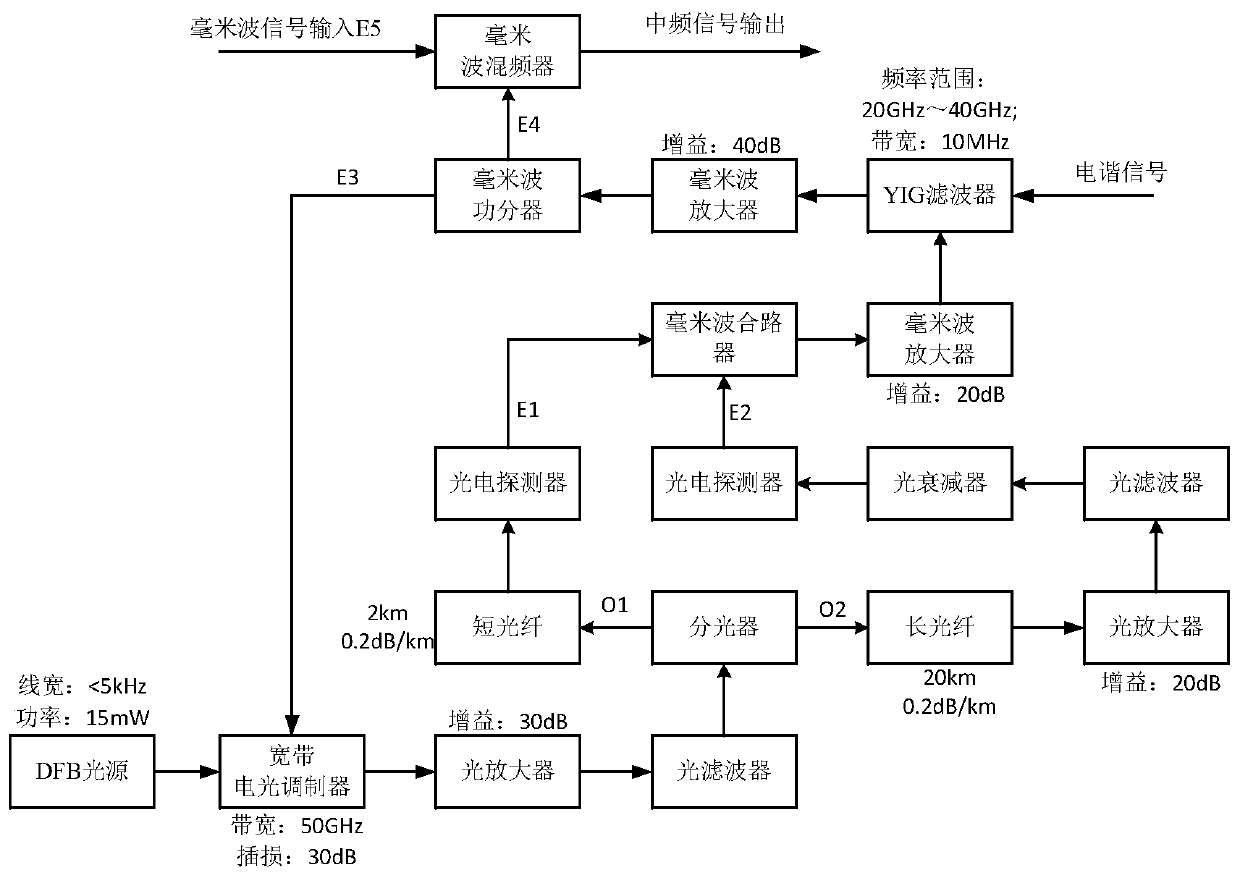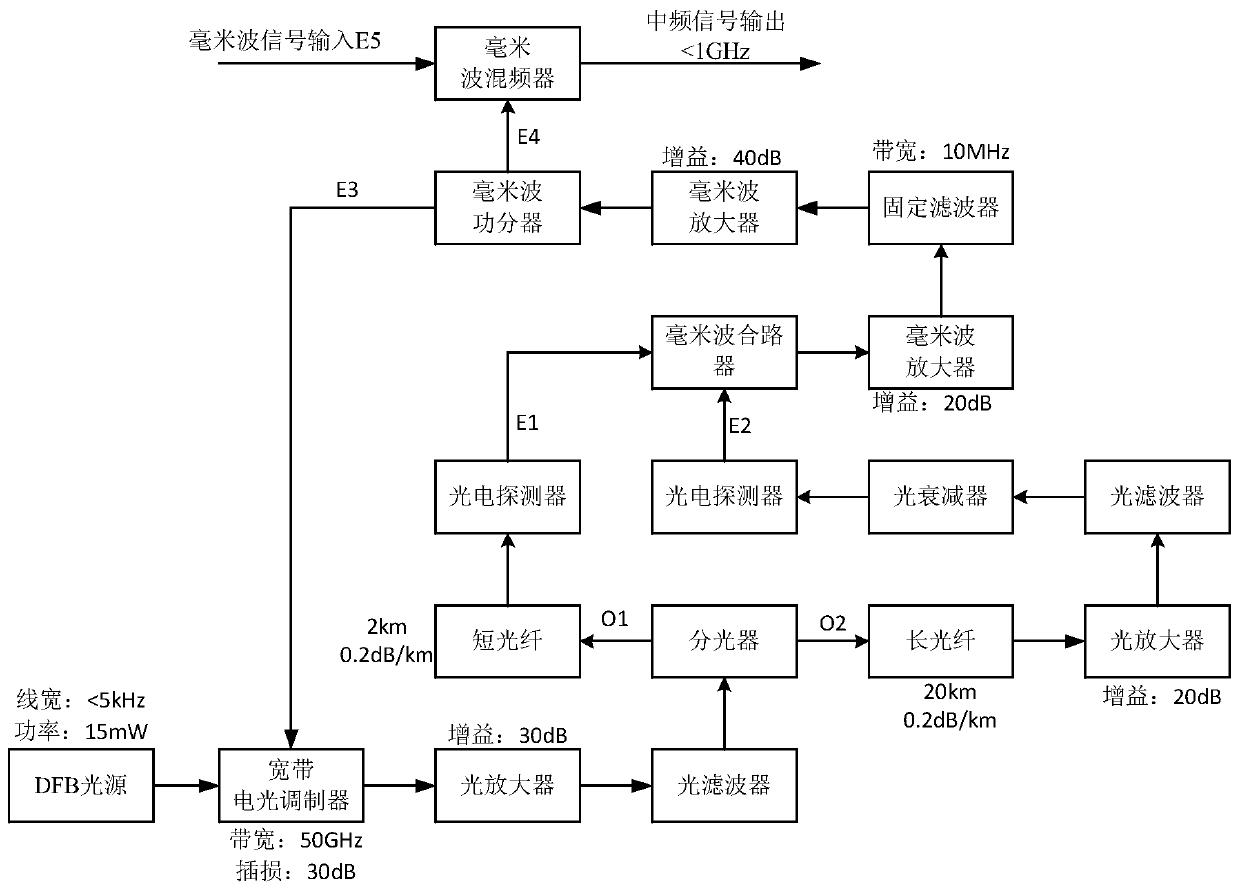Down-conversion method of ultra-low additional phase noise millimeter wave signal source
A phase noise and millimeter wave technology, which is applied in spectrum analysis, measurement of electrical variables, multi-frequency modulation transformation, etc., can solve the problems of reducing the phase noise accuracy of millimeter wave signal sources and the phase noise of local oscillator signals of limited frequency converters, etc. , to achieve the effect of improving measurement accuracy, high measurement accuracy and reducing error
- Summary
- Abstract
- Description
- Claims
- Application Information
AI Technical Summary
Problems solved by technology
Method used
Image
Examples
Embodiment Construction
[0014] refer to figure 1 . According to the present invention, the DBF light source with a narrow linewidth is modulated by a broadband photoelectric modulator, and after being amplified by a broadband photoelectric modulator, an optical amplifier and filtered by an optical filter, it is divided into two optical signals by an optical splitter, and one of them is sent to the first optical signal through a short optical fiber. One photodetector is converted into an electrical signal; the other is sent to the second photodetector through a long optical fiber, an optical amplifier, an optical filter and an optical attenuator to be converted into an electrical signal, and the two electrical signals are synthesized into one by a millimeter wave combiner, and then After being amplified by the millimeter-wave amplifier and filtered by the filter, the millimeter-wave power divider is divided into two millimeter-wave signals, one of which is input to the electrical input interface of th...
PUM
 Login to View More
Login to View More Abstract
Description
Claims
Application Information
 Login to View More
Login to View More - R&D
- Intellectual Property
- Life Sciences
- Materials
- Tech Scout
- Unparalleled Data Quality
- Higher Quality Content
- 60% Fewer Hallucinations
Browse by: Latest US Patents, China's latest patents, Technical Efficacy Thesaurus, Application Domain, Technology Topic, Popular Technical Reports.
© 2025 PatSnap. All rights reserved.Legal|Privacy policy|Modern Slavery Act Transparency Statement|Sitemap|About US| Contact US: help@patsnap.com



